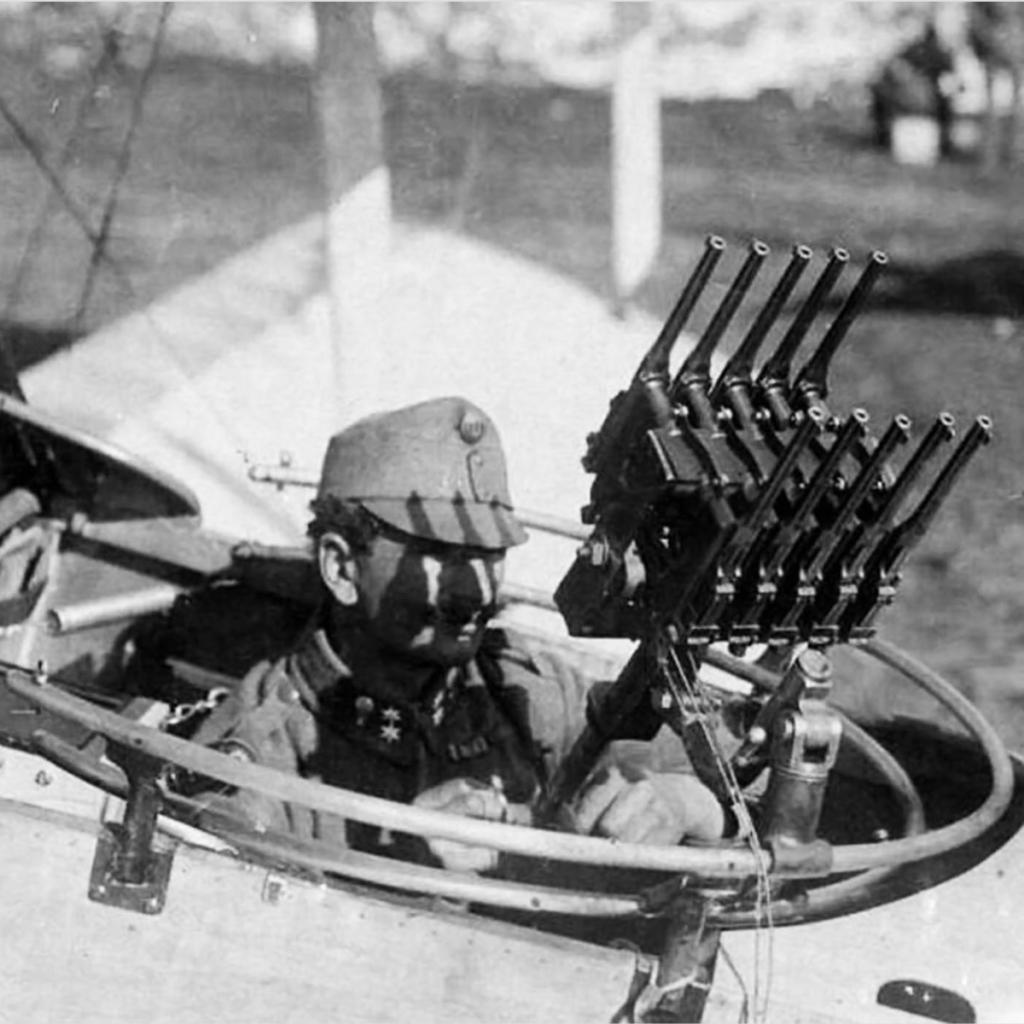
Two bars passed through the five uppers and five lower trigger guards and were attached to the single aiming grip that can be seen in his hand. It had a trigger at the end which was pulled to fire all ten pistols at the same time.
Given the close arrangement of the pistols, if the gunfire did hit the enemy aircraft, it would have been like using a shotgun. With the light frame and canvas structures of early war aircraft that might have been enough to bring it down.
But one has to wonder how long it would take, and how difficult it would be, to reload and re-mount all ten pistols while maneuvering and trying to avoid nearby enemy aircraft.
The C96 was introduced in 1896 and was immediately popular, being sold to governments, commercially to civilians and individual military officers within the first year of production.
As a military sidearm, the pistols saw service in various colonial wars, as well as World War I, The Easter Rising, the Estonian War of Independence, the Spanish Civil War, the Chinese Civil War, and World War II.
The C96 also became a staple of Bolshevik Commissars and various warlords and gang leaders in the Russian Civil War, known simply as “the Mauser”.
With its long barrel and high-velocity cartridge, the Mauser C96 had a superior range and better penetration than most other pistols of its era.
The 7.63×25mm Mauser cartridge was the highest velocity commercially manufactured pistol cartridge until the advent of the .357 Magnum cartridge in 1935. A distinctive characteristic of the C96 was its wooden shoulder stock which can double as a holster or carrying case and a grip shaped like the handle of a broom.
